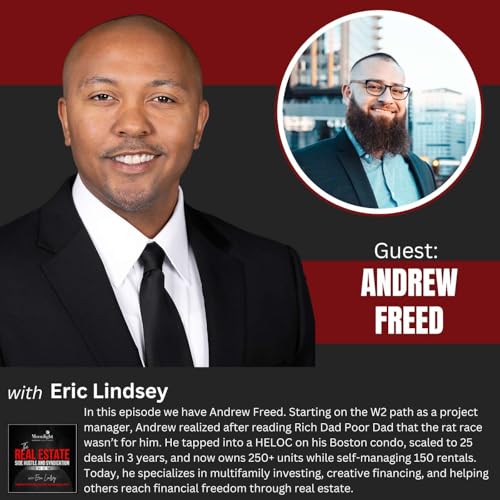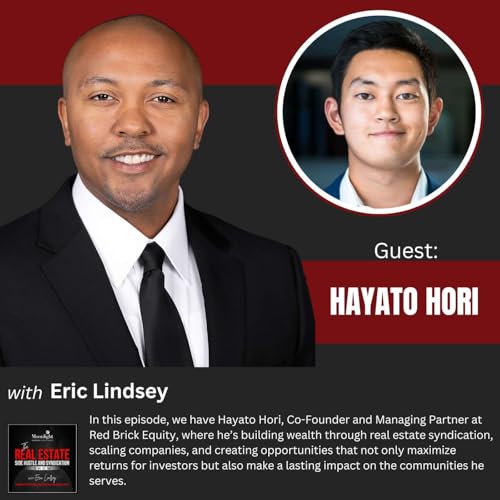Guest: Hayato Hori, Managing Partner at Red Brick Equity
Focus: How to start and scale real estate investing on the side—both actively and passively—while keeping your W-2 or main business strong.
Starting Out: From W-2 to Real Estate
Hayato bought his first rental property in Memphis at age 21, right out of college. At the time, he was working at Hyperloop Transportation Technologies, an innovative company tied to Elon Musk’s vision for high-speed travel. Although he loved the job and his team, his side hustles and entrepreneurial drive kept pulling him toward real estate.
That first rental only cash-flowed ~$200/month, not enough to live on. Within a year, Hayato left his job to pursue wholesaling off-market deals. He quickly scaled to 10–15 transactions per month, selling to both retail and institutional buyers.
The Shift: From Wholesaling to Wealth Building
While wholesaling, Hayato noticed one of his main buyers—an institutional fund—grow from nothing to over $1 billion in assets in just a few years. The difference? They held their properties, while he was stuck in the “rat race” of chasing the next deal.
That realization pushed him toward multifamily investing and syndications, where the power of compounding ownership creates lasting wealth. Today, as co-founder of Red Brick Equity, Hayato and his partners focus on multifamily properties in the Midwest. They recently closed on a 26-unit property in Chicago, with a 24-unit deal in the pipeline, aiming for ~100 units by year-end.
How to Invest in Real Estate While Working or Running a Business Full-Time
Start Small, Learn Big — Use your job’s income to buy your first rental or invest passively in a syndication to test if you enjoy real estate.
Understand Financing — Learn loan products for single-family and multifamily to know your true buying power.
Build a Team Early — Property management, contractors, and advisors will determine long-term success.
Keep Cash Reserves — Real estate is capital intensive; unexpected costs are guaranteed.
Leverage Partnerships — You don’t need the whole pie—sometimes a slice, shared with the right partners, grows faster.
Active vs. Passive Investing: Lessons from Hayato
Active (Wholesaling, Direct Ownership): Great for building skills and quick cash, but can trap you in constant deal-chasing.
Passive (Syndications, Funds): Lets investors benefit from ownership and upside without day-to-day management. Hayato believes this model is “a beautiful way for everyone to grow together.”
Case Study: Recent 26-Unit Chicago Deal
Purchase Price: $2.7M (~$100k/unit).
Rents: 2BR averaging $1,550–$1,600, with upside to $1,780+. 3BR averaging $1,750–$1,800, with Section 8 vouchers paying up to $2,300.
Business Plan: Light improvements slightly above market to attract long-term tenants. Section 8 renters often stay longer, lowering turnover costs.
Financing: Agency loans (Fannie/Freddie) with non-recourse benefits, available if ≥90% occupancy for 3 months.
Key Takeaways for High-Income Earners and Business Owners (Investing on the Side)
Use your W-2 income as leverage. Lenders value steady income, giving you access to favorable financing.
Start with manageable properties. A single rental or duplex can teach you everything about cash flow, management, and tenants.
Don’t ignore “blue states.” Chicago has strong fundamentals and Section 8 programs where voucher rents often exceed market rents. Avoid cookie-cutter advice—focus on the numbers.
Scale with multifamily. Fewer roofs, fewer boilers, and better economies
 2025/10/2351 分
2025/10/2351 分 2025/10/1645 分
2025/10/1645 分 37 分
37 分 31 分
31 分 48 分
48 分 31 分
31 分 25 分
25 分 2025/09/0429 分
2025/09/0429 分
